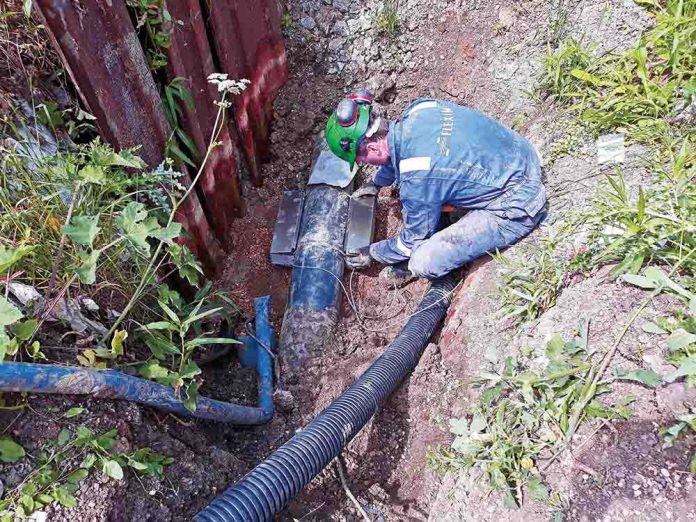On the 29th March 2021, the UK Government announced measures to put into law new duties on water companies to reduce sewage discharged into waterways.
Quoting from UK Government site www.gov.uk/government/news/measures-to-reduce-harm-from-storm-overflows-to-be-made-law: “During wet weather, storm overflows act to prevent sewers becoming overloaded with a combination of sewage and rain and release diluted wastewater into rivers. However, their use has increased in recent years as climate change has led to greater rainfall and water infrastructure has not kept pace with population growth.” The announcement goes on to outline three key duties which it aims to put into law:
- a duty on government to publish a plan by September 2022 to reduce sewage discharges from storm overflows;
- a duty on government to report to Parliament on progress on implementing the plan; and
- a duty on water companies to publish data on storm overflow operation on an annual basis.
The data required by government is only going to come from one source – dynamic flow measurement of wastewater, whether existing or new.
Past convention has generally held that ultrasonic wastewater flow measurement in closed-pipes is the domain of doppler ultrasonic technology, a technique first promoted in the 1980’s that is 100% reliant upon ultrasound reflected from suspended solids within the flow stream. However, in practice doppler technology frequently fails to deliver the expected levels of real-world performance required for accurate wastewater monitoring.
However, Transit Time (or Time of Flight) ultrasonic metering from FLEXIM provides optimum levels of flow measurement performance and repeatability for wastewater flows of up to at least 10% solids (or gas breakout) by volume and has been proven to work with substantially superior performance in countless wastewater applications. Factory calibrated to +/-0.3% flow measurement uncertainty, installed performance can be as good as +/-1% if provided with sufficient straight lengths. Naturally, straight lengths are frequently unavailable within the confines of SPS buildings, but when required, optimum measurement uncertainty can be achieved by adding a second ultrasound channel for greater flow profile averaging. Whatever the arrangement implemented, FLEXIM’s repeatability of +/-0.15% can be relied upon for wastewater monitoring and trending confidence.
Sewage Pumping Station (SPS) Rising Mains
It is widely acknowledged that rising mains have the highest failure rate per unit length of any type of water industry pipeline asset. Rising main failures will frequently result in loss of service and pollution events or sewer flooding, particularly in larger mains where there is no possibility of tanker use to divert all the flow. Reactive repair of rising main bursts will also come with the likely additional cost of pollution fines and is substantially more expensive than a planned outage.
Rather than waiting for the inevitable alarms from multiple SPS sites after heavy inundation, installing and monitoring dynamic flow meter data provides early warning of flow outside consent limits and directs operatives to the most critical sites before costly overspills occur.
Despite the challenges of minimum space available within SPS buildings in dry or wet wells, it is rare that a FLEXIM WD Series meter cannot be fitted to an acceptable section of pipe. Where space within the pumping station building is simply too cramped, it is often possible to excavate a section of pipe beyond the SPS walls. FLEXIM meters supplied with IP68 transducers are simply attached to the pipe and then backfilled with pea-shingle, then topped off as appropriate to each site’s local requirements.
WwTW FFT, PFF and MCERTS Metering
FLEXIM meters can assist in meeting one of the key challenges of PR19/AMP7, namely measurement of compliance with pass forward flow (PFF) to WwTW.
WwTW designed and built > 30 years ago are frequently expected to perform to the same design specifications decades later, despite population growth and the continuously expanding conurbations and more frequent extreme weather events.
But upgrade investment plans cannot be developed without real time, reliable flow data upon which to base new plant designs. Implementation of inline closed-pipe Flow to Full Treatment (FFT) and Pass Forward Flow (PFF) monitoring can often be costly and only achieved during planned outages (with associated customer service interruptions). However, this can be avoided if utilising FLUXUS WD Series clamp-on metering from FLEXIM. WD Series clamp-on meters can easily be installed without any process interruption or outages and assist with the prevention of premature discharges from storm water retention tanks, reducing the number of discharges into local watercourses.
All FLEXIM WD Series meters are MCERTS certified and are also available with IP68 transducers for full submersion in flooded chambers.
For further information on how FLEXIM can deliver highly accurate wastewater, or even RAS or SAS metering at optimum cost, and without any supply interruption, contact: sales@flexim.co.uk
01606 781 420



